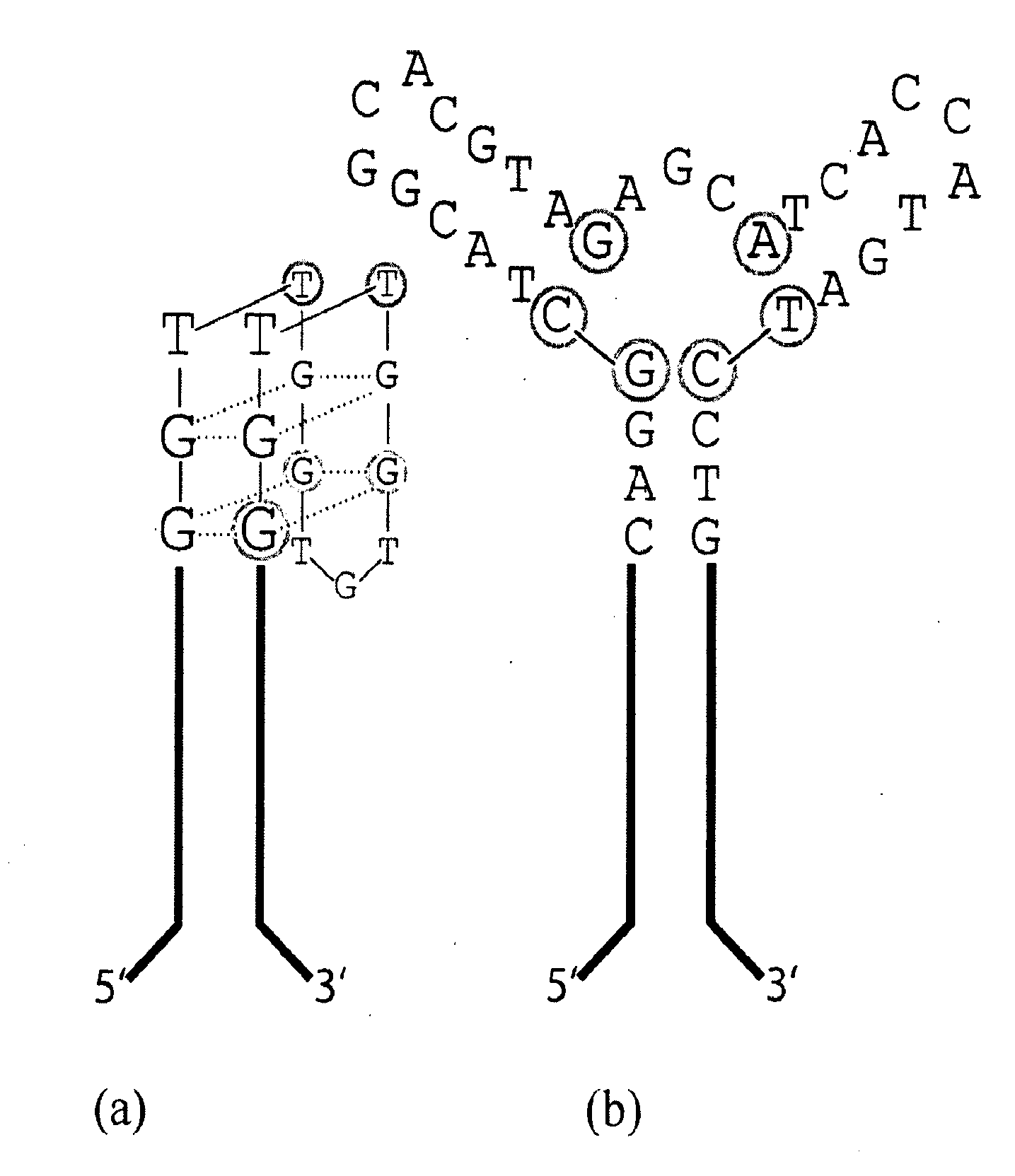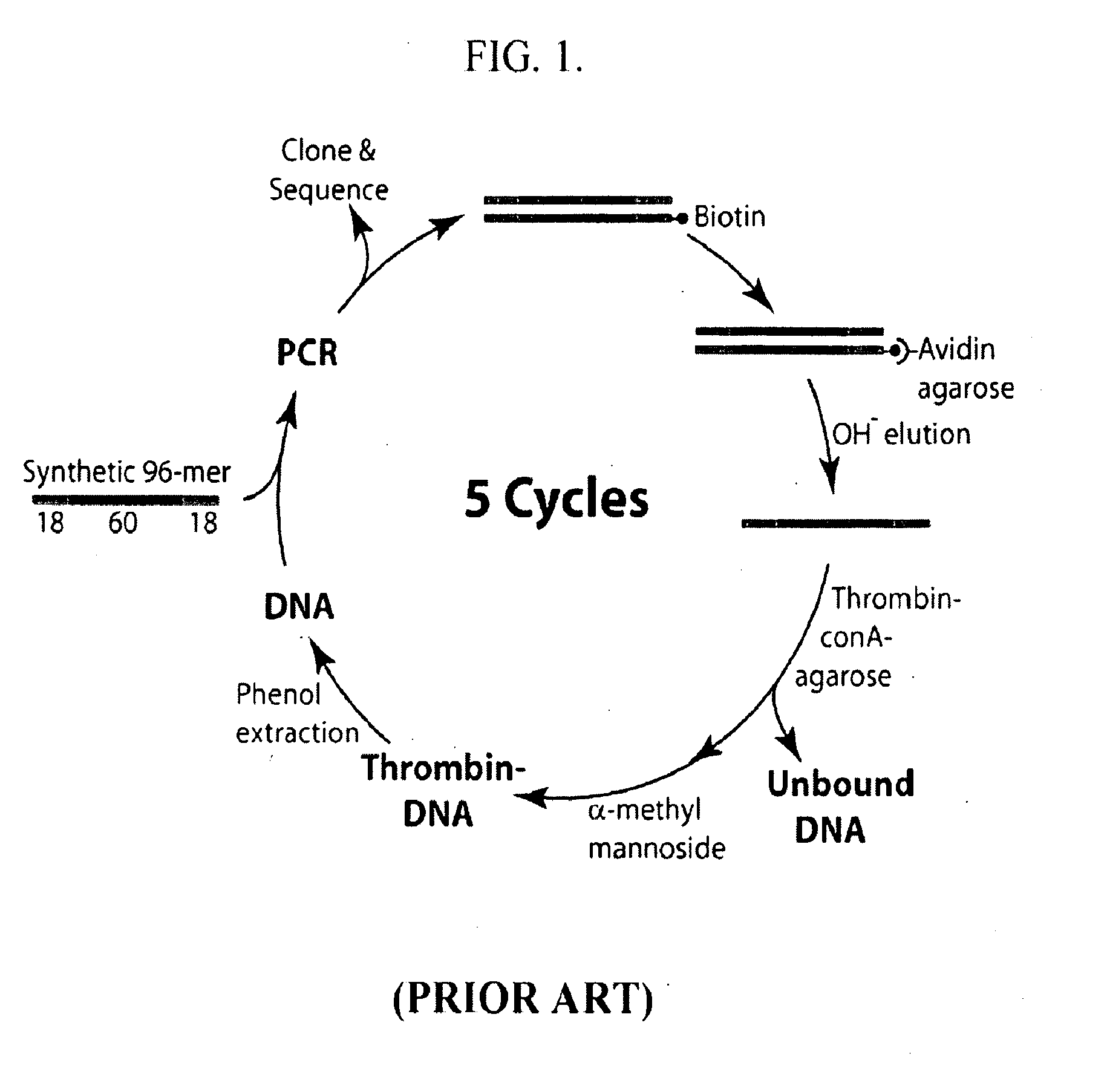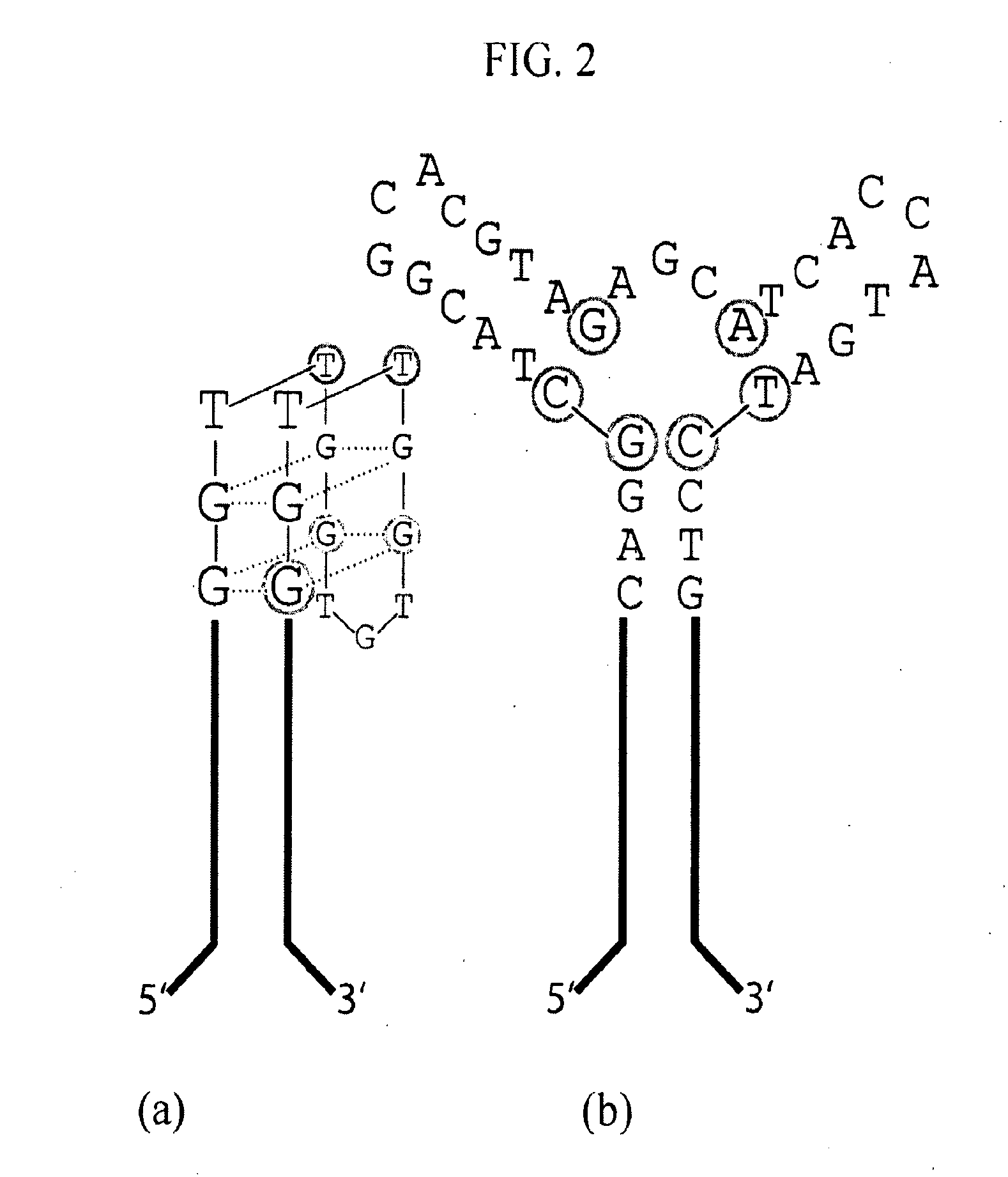Direct selection of structurally defined aptamers
a technology of aptamers and structurally defined aptamers, applied in the field of aptamers, can solve the problems of difficult direct synthesis and screening of all sequences, complex internal structures, and limited success, and achieve the diversity of sequences screened as well as the time needed, and improve throughput. the effect of cost and time consumption
- Summary
- Abstract
- Description
- Claims
- Application Information
AI Technical Summary
Benefits of technology
Problems solved by technology
Method used
Image
Examples
example 1
Screening of Aptamers From Oversampled, Structured Libraries
[0109]The 15-base canonical TBA sequence, described above and shown in FIG.2(a), was discovered after 5 rounds of selection from a sparsely sampled 60 mer SELEX library and the sequencing of 32 clones [Bock et al, (1992) Nature, 355, 564-566]. To test the efficacy of the HTSA selection methodology, the complete sequence space of a m=15 hairpin HT-aptamer library was probed for HT-aptamers capable of specific binding to alpha-thrombin. Subsequent to the thrombin selection study, an aptamer candidate specific for the hexose sugars—glucose and particularly α-methyl-mannoside was also serendipitously identified. This finding was accidental as glucose was present from its role as the stabilizer for the affinity beads and α-methyl-mannoside was the elution agent. In addition to the direct isolation of aptamers, HTSA also demonstrates that it can be effectively used for direct exploration of aptamer sequence space by providing a c...
example 2
Use of Multiplexed Microarray Chips to Discover High Affinity Aptamers Against HIV-1 Nucleocapsid Protein (NCp7)
[0140]The process of discovering tight binding sequences was greatly accelerated by systematically searching through a structurally defined library of sequences assembled in microarray format in this example. For this study we successfully screened HIV-1 Nucleocapsid Protein p7 (NC) against a DNA hairpin library containing all possible 3 to 6 nucleotide loop sequences at varying levels of feature complexity. In two consecutive chip screens, we discovered several high affinity DNA loop sequences that bound NC with low nM affinity, as determined by NC-Tryptophan titration assays.
[0141]Materials and Methods
[0142]DNA libraries: The N3-N6 DNA hairpin library covered all possible 3 to 6 base loop sequences (21 mers to 24 mers respectively) for a total of 5440 unique sequences. The library was synthesized in pool complexities (# sequences per pool) of 64 (FIG. 12a ) and 256 (FIG....
PUM
| Property | Measurement | Unit |
|---|---|---|
| Substance count | aaaaa | aaaaa |
| Length | aaaaa | aaaaa |
| Secondary structure | aaaaa | aaaaa |
Abstract
Description
Claims
Application Information
 Login to View More
Login to View More - R&D
- Intellectual Property
- Life Sciences
- Materials
- Tech Scout
- Unparalleled Data Quality
- Higher Quality Content
- 60% Fewer Hallucinations
Browse by: Latest US Patents, China's latest patents, Technical Efficacy Thesaurus, Application Domain, Technology Topic, Popular Technical Reports.
© 2025 PatSnap. All rights reserved.Legal|Privacy policy|Modern Slavery Act Transparency Statement|Sitemap|About US| Contact US: help@patsnap.com



